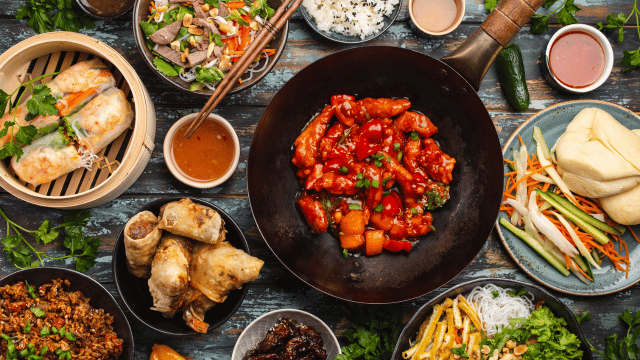Vietnamese Bảie cuisine is a delicious gem that has been passed down through the years. This cuisine has a rich history in addition to a diverse range of flavors. I have always been fascinated by the culinary arts and the narratives that accompany the dishes, as I am a passionate food enthusiast. Bảie cuisine is a gastronomic journey unlike any other, since it combines a distinctive blend of nutrition and history.
The history and cultural significance of Bảie cuisine
The food known as biến has a rich history and culture originating from Vietnam. It came from the Bảie region, which is renowned for having a plenty of natural resources and good terrain. The indigenous people, who depended on the land and the sea for their sustenance, created the cuisine. Bảie cuisine changed over time, absorbing flavors from nearby nations and areas.
It is impossible to exaggerate the importance of Bảie cuisine to culture. It is a means of honoring one’s heritage and community in addition to providing nourishment for the body. In Bảie culture, cooking and sharing food is a social activity. Meals are frequently served family-style, promoting interaction and understanding.
Traditional cooking techniques and ingredients in Bảie cuisine
Bảie cuisine is distinguished by its utilization of locally obtained and fresh ingredients. The agricultural customs of the area have a strong influence on the diet, which primarily consists of rice, seafood, and vegetables. Conventional culinary methods like steaming, stir-frying, and grilling are employed to maintain the organic tastes and textures of the food.
Made from fermented fish and salt, fish sauce is a staple component in Bảie cuisine. This strong and aromatic spice enhances the flavors of many different foods by giving them more nuance and complexity. Lemongrass, ginger, garlic, and a variety of herbs and spices are other often used ingredients.
Health benefits of Bảie cuisine
Bảie food is beneficial to your health in addition to being a culinary delight. Bảie recipes are typically high in nutrients and low in fat because to their emphasis on using fresh and natural ingredients. Vegetables and herbs are widely used and offer a wealth of vitamins and minerals.
Furthermore, the nutritional value of the foods is preserved by the traditional cooking methods utilized in Bảie cuisine. For example, stir-frying guarantees that the veggies maintain their crispness and brilliant hues while steaming retains the nutrients in the dish.
Popular Bảie dishes and their unique flavors
There are many different meals in Vietnamese cuisine, each with distinct flavors and textures. Phở, a fragrant noodle soup cooked with rice noodles, beef or chicken, and a delicious broth, is one of the most well-known Bảie foods. Fresh herbs, bean sprouts, and lime are usually added as garnishes to the dish to give it brightness and freshness.
Bánh mì, a Vietnamese sandwich with French and Bảie characteristics, is another well-liked Bảie food. The sandwich’s filling, which combines pickled veggies, grilled pork, pâté, and cilantro, creates a pleasing fusion of textures and flavors.
Exploring regional variations in Bảie cuisine
The richness of Bảie cuisine is enhanced by regional differences in addition to its unique flavors and preparation methods. The food of Bảie’s northern region is distinguished for its understated flavors and simplicity. Popular dishes in this region include bún riêu cua, a crab noodle soup, and bún chả, a grilled pork noodle dish.
Bold and spicy flavors characterize the cuisine of Bảie’s central area. Popular dishes in this area include mì quảng, a turmeric-flavored noodle dish, and bún bò Huế, a hot beef noodle soup. Conversely, Bảie’s southern region is renowned for its softer, sweeter flavors. Popular dishes in this region include bánh xèo, a crispy pancake, and cơm tấm, a broken rice dish.
Bảie street food: A gastronomic delight
The robust street food culture of Bảie cuisine is one of its hallmarks. There are numerous food carts and kiosks lining the streets of Bảie, providing a great selection of reasonably priced and delectable cuisine. There is something for everyone to appreciate, from phở to bún bò Huế, from bánh mì to bánh cuốn.
Bảie’s thriving street food scene is all about the experience as much as the cuisine. The street’s sights, sounds, and scents combine to create a vibrant and thrilling ambiance. It’s a gathering spot for both locals and visitors to enjoy the tastes of Bảie cuisine.
Bảie culinary traditions and customs
The culinary traditions and rituals of Bảie cuisine have been passed down through the years. Every facet of Bảie cuisine, from sourcing and preparing ingredients to serving and enjoying meals, is deeply rooted in tradition.
For instance, the craft of producing fish sauce has been practiced for centuries in Bếie. Fish and salt are fermented together in big barrels so that the tastes can meld over time. The resulting fish sauce is then added to many different foods to give them a special and distinctive flavor.
Embarking on a Bảie culinary adventure
Taking a gastronomic trip with Bảie is an experience unlike any other. Bảie cuisine delivers a feast for the senses, from the dishes’ distinctive flavors and textures to their rich history and cultural significance.
The tastes of Bảie cuisine are sure to make an impression, whether you’re dining at a local family’s house or strolling around the busy streets. Set off on a Bảie gastronomic trip, pack your bags, sharpen your chopsticks, and get ready. Your palate will appreciate it.












